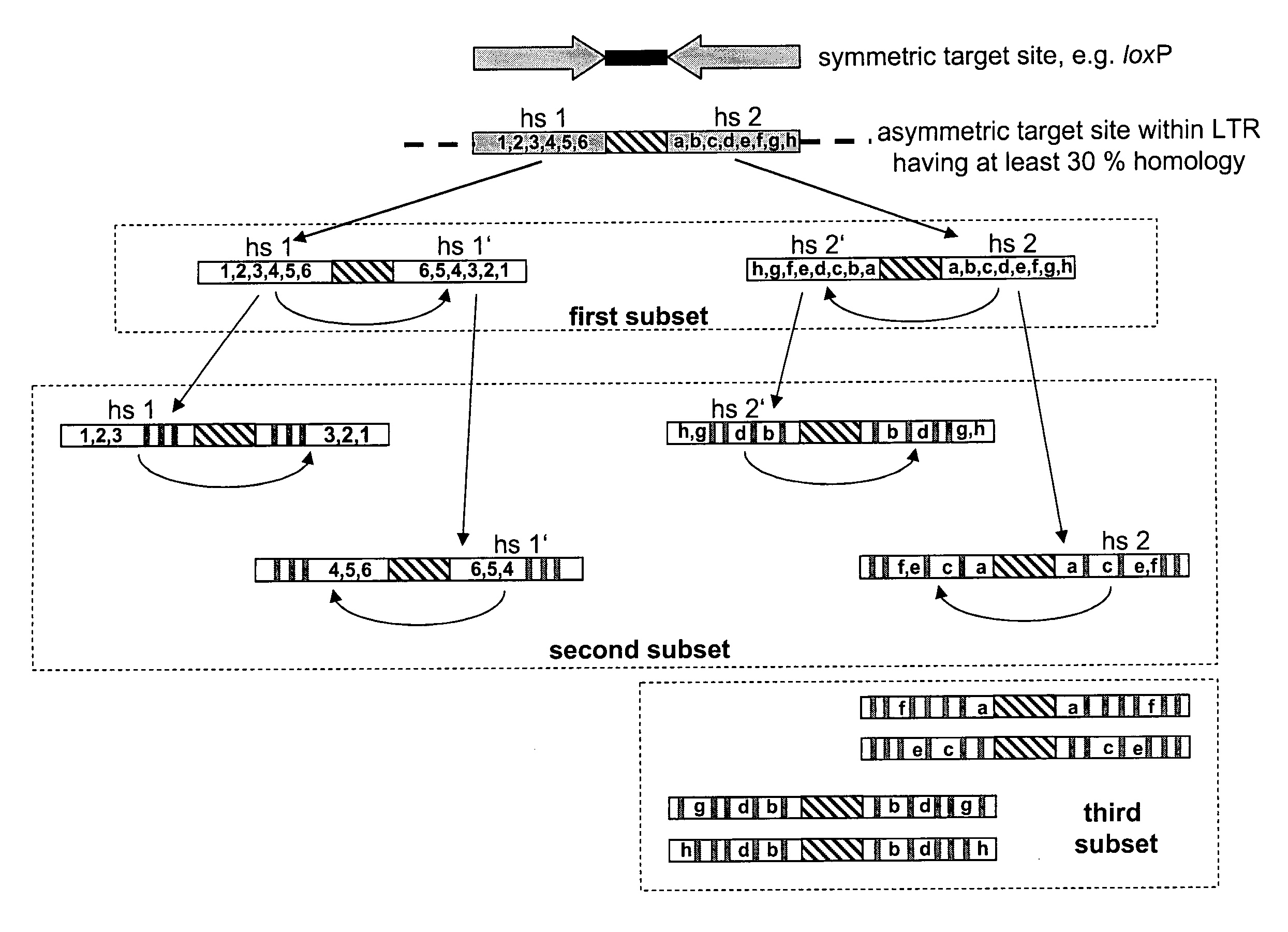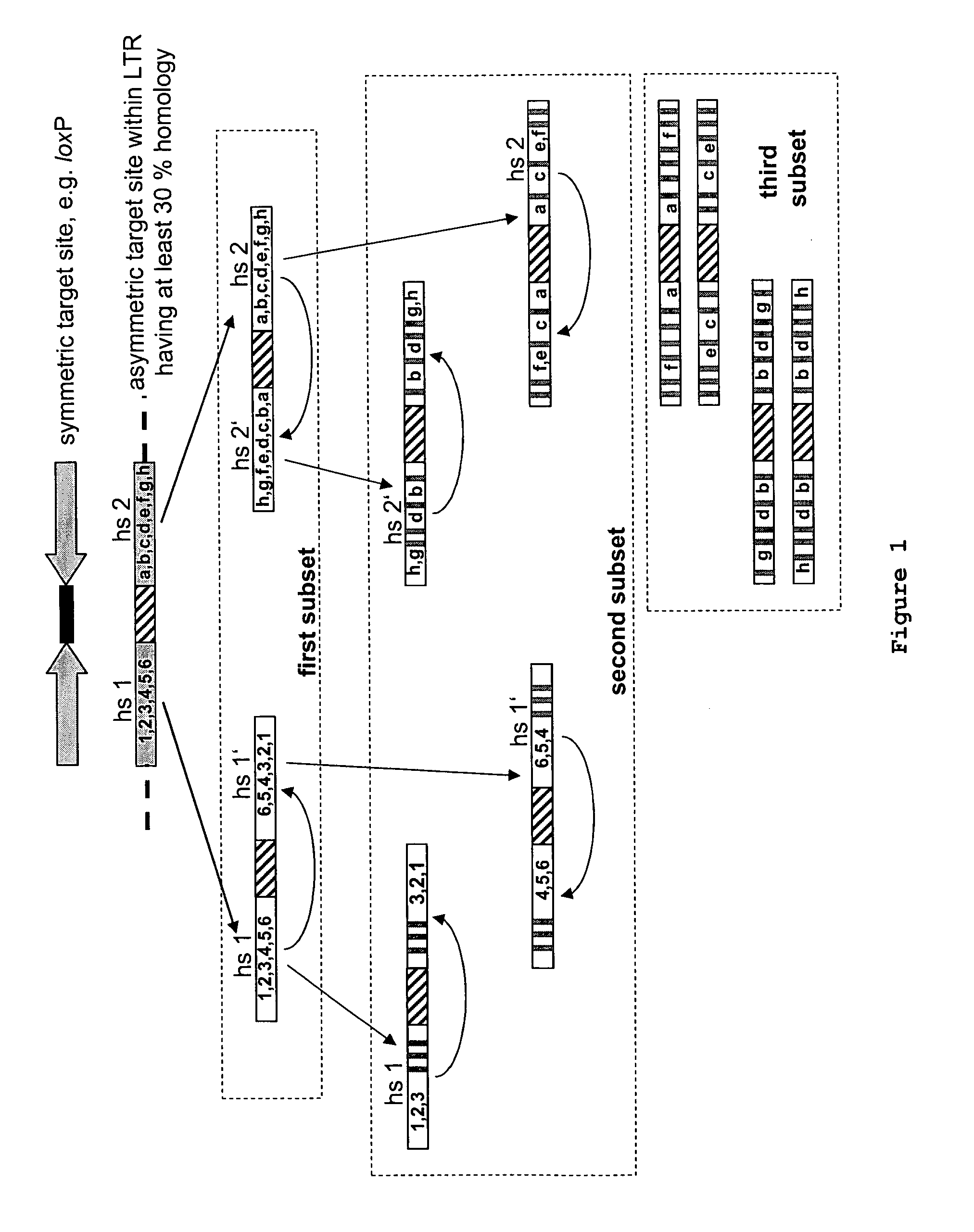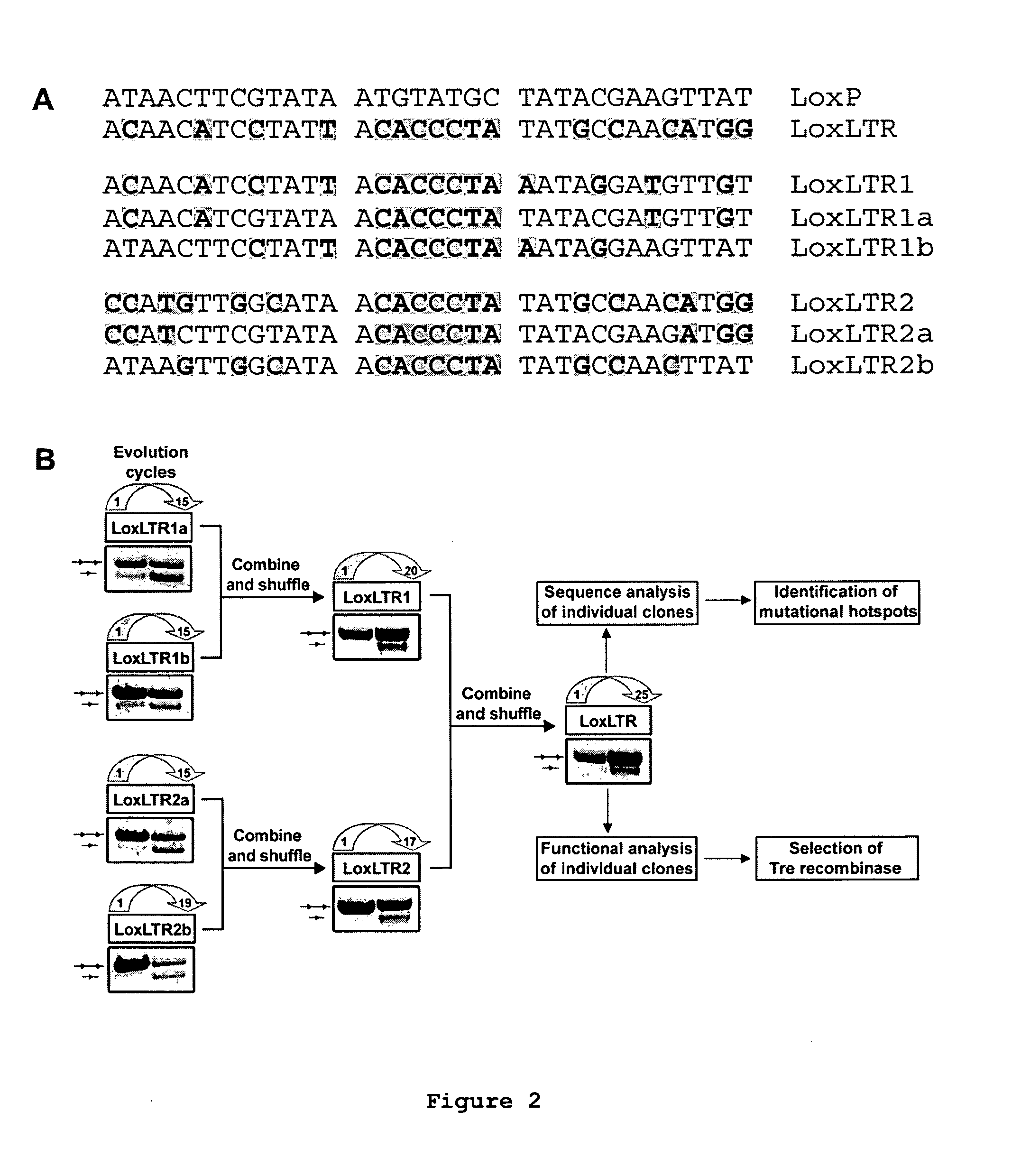Use of tailored recombinases for the treatment of retroviral infections
a retroviral infection and recombinase technology, applied in the field of retroviral infection treatment with tailored recombinase, can solve the problems of long-lived hiv-1 reservoirs, inability to eradicate infection, and inability to suppress the viral life cycle without eradicating infection, and achieve the effect of reducing the viral load
- Summary
- Abstract
- Description
- Claims
- Application Information
AI Technical Summary
Benefits of technology
Problems solved by technology
Method used
Image
Examples
example 2
Generation of a Tailored Recombinase Recognising and Recombining an Asymmetric Target Sequence within the LTR of HIV-1
[0220]I. Determination of Candidate Asymmetric Target Sequences
[0221]To start the evolution process HIV-1 LTR sequences were scanned first for a sequence with similarity to the canonical loxP site. The chosen sequence belongs to the LTR of the primary HIV-1 strain TZB0003 (BLACKARD et al., 1999) and is part of its modulatory U3 region (sequence position-262 to -229; where the site of transcription initiation is +1). The selected loxLTr site is a 34 bp asymmetric sequence that has 50% sequence similarity to loxP with four mismatches in the left element, six in the right element and a completely different spacer (see FIG. 2A).
[0222]II. Examination of the loxLTR Sequence in Substrate Linked Directed Protein evolution in E. coli
[0223]The loxLTR sequence was examined in substrate linked directed protein evolution as described (BUCHHOLZ & STEWART, 2001) (see also FIG. 3)...
example 3
Characterisation of the Tre Recombinase
[0245]I. Recombination Properties of Tre in Mammalian Cells
[0246]HeLa cells were cultured at 37° C. under 5% CO2 in DMEM containing 100 units / ml of penicillin and streptomycin and supplemented with 10% FCS unless stated otherwise.
[0247]A puromycin resistant pSVloxltr reporter cell line was obtained by transfection of 2×106 cells with 8 μg of the reporter plasmid using Effectene transfection reagent (Qiagen) according to the manufacturer's instructions, and selection with 5 μg / ml puromycin (Invivogen). The final stable cell line was grown in presence of 3 μg / ml of puromycin.
[0248]HeLa cells were cotransfected with recombinase expression—and reporter plasmids in a 1:2 ratio in 6-well format using Effectene (Qiagen). A total of 0.6 μg of DNA was used for transfections. Parallel transfections with recombined version of the reporter plasmids were carried out to calculate the percentage of recombined reporter plasmids.
[0249]Recombinase activity was e...
example 4
Excision of a Full-Size Provirus from the Genome of HIV-1 Infected Human Cells
[0261]The capability of Tre to excise a full-size provirus from the genome of HIV-1 infected human cells was examined.
[0262]To test this, a proviral DNA, derived from the HIV-1 strain NL4-3 (ADACHI et al., 1986), was constructed that contains the loxLTR sequence in its 5′ and 3′ LTR (depicted in FIG. 10A). In this construct, the nef reading frame, which is dispensable for virus replication in cell culture, was substituted by the puromycin resistance gene. In addition, the increase in total genome length was compensated by deletion of env-specific sequences.
[0263]Viral pseudotypes were produced by transient cotransfection of 293T cells with this proviral DNA and an expression vector encoding the vesicular stomatitis virus envelope glycoprotein (VSV-G). Briefly, the HIV-1 pseudotypes were produced by transient cotransfection of 1×106 293T cells with 3 μg pNLT2ΔenvPuro and 3 μg pCMV-VSV-G in OptiMEM I (Invit...
PUM
| Property | Measurement | Unit |
|---|---|---|
| temperatures | aaaaa | aaaaa |
| concentration | aaaaa | aaaaa |
| concentration | aaaaa | aaaaa |
Abstract
Description
Claims
Application Information
 Login to View More
Login to View More - R&D
- Intellectual Property
- Life Sciences
- Materials
- Tech Scout
- Unparalleled Data Quality
- Higher Quality Content
- 60% Fewer Hallucinations
Browse by: Latest US Patents, China's latest patents, Technical Efficacy Thesaurus, Application Domain, Technology Topic, Popular Technical Reports.
© 2025 PatSnap. All rights reserved.Legal|Privacy policy|Modern Slavery Act Transparency Statement|Sitemap|About US| Contact US: help@patsnap.com



